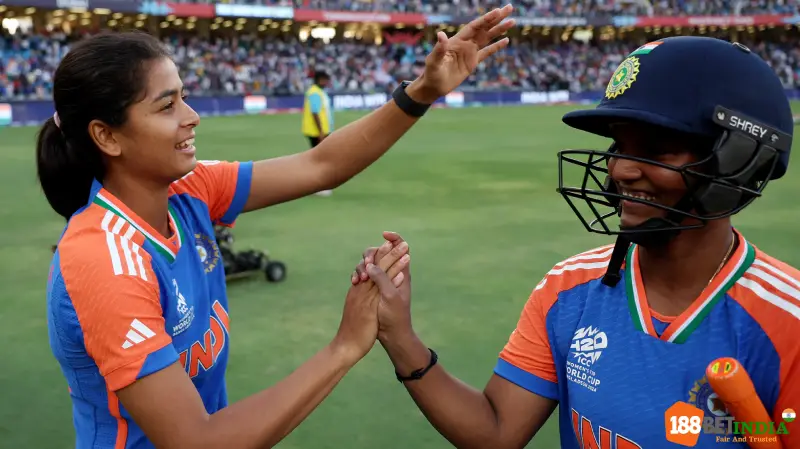The much-anticipated clash between the Pakistan Women’s National Cricket Team and the India Women’s National Cricket Team had fans on the edge of their seats, and rightly so. With both teams bringing their A-game, the showdown in Multan proved to be a thrilling encounter filled with impressive performances, strategic plays, and unforgettable moments. From the fierce determination of Pakistan’s top-order to India’s bowling prowess, this match had everything you’d expect from a high-stakes encounter.

Pakistan’s Attacking Start
The match started with Pakistan electing to bat first, and right from the word go, it was clear that this was not going to be an easy ride for India. Although Pakistan lost an early wicket when Saim Ayub was strangled down the leg by Gus Atkinson in the fourth over, Shan Masood and Abdullah Shafique quickly picked up the momentum. Their aggressive approach led Pakistan to an impressive 122 for 1 at lunch.
While the Indian pacers had some early assistance from the pitch, Pakistan’s top order made the most of the conditions once the movement subsided. Shafique, with his precise timing, found gaps effortlessly, while Masood, after taking his time to settle, accelerated the innings by stepping out against spinners. His fifty came in just 43 balls, showcasing his improved game against spin, and Shafique followed soon after with a boundary-laden attack right before lunch.
India’s Bowling Prowess
Despite Pakistan’s fiery start, India’s Women’s National Cricket Team was far from disheartened. Known for their formidable bowling attack, they relied heavily on their spinners and seamers to contain the Pakistani batters. Pooja Vastrakar, missing from the lineup due to injury, left a noticeable void, but Arundhati Reddy stepped up magnificently in her absence.
Arundhati’s performance was one of the highlights of the match, as she demonstrated her newfound versatility with the ball. Despite some fielding hiccups—including dropped catches by Asha Sobhana—she remained undeterred and finished with a career-best 3/19, giving India a crucial edge in the bowling department. Her ability to create angles and bowl intelligently under pressure proved invaluable, particularly when Pakistan’s batters seemed poised to push beyond 200.
The Turning Point
While Pakistan looked set for a massive total, the game took a dramatic turn after lunch. A combination of smart bowling changes and disciplined fielding allowed India to claw their way back into the match. The spinners, particularly Omaima Sohail and Nashra Sandhu, tightened the screws, picking up two wickets apiece and putting immense pressure on the middle-order batters.
The momentum shifted in India’s favor as Pakistan struggled to keep up the tempo they had established in the first session. Wickets fell in quick succession, and Pakistan found themselves reeling after losing their in-form batters. Fatima Sana, Pakistan’s captain, provided some late resistance with a fighting 30 off 20 balls, but it wasn’t enough to prevent India from taking control of the match.
The Final Act
In a low-scoring encounter like this, every run and every wicket counted. Pakistan, who had initially looked set for a much higher total, were eventually bowled out for 116 in 20 overs. For India, it was a matter of keeping calm and sticking to the basics. Chamari Athapaththu, Sugandika Kumari, and Udeshika Prabodhani had been impressive with the ball, but it was India’s teamwork that ensured they stayed in the game.
Chasing 117, India’s start was shaky, but their middle order stood firm. The crowd of nearly 16,000 at the Dubai stadium watched on as India capitalized on their chances, taking wickets at crucial intervals to reduce Pakistan to 85/9 in their 20 overs, thus winning the game by 31 runs.
FAQs
The standout players for Pakistan were Shan Masood and Abdullah Shafique, with their half-centuries providing a solid foundation. For India, Arundhati Reddy’s bowling performance (3/19) played a crucial role in turning the match in India’s favor.
Pakistan started strong with Shan Masood and Abdullah Shafique leading the charge. However, after their dismissals, the middle-order struggled, and they were bowled out for 116 in 20 overs.
India focused on disciplined bowling, with Arundhati Reddy and the spinners playing pivotal roles. They contained Pakistan’s middle-order batters and capitalized on the fielding errors to restrict Pakistan to a low total.
Arundhati Reddy’s performance was instrumental in India’s victory. Her ability to create pressure and take crucial wickets helped India bounce back after a strong start from Pakistan. Her 3/19 was her best in T20I cricket and earned her the Player of the Match award.
This win is a significant morale booster for India as they aim to progress in the T20 World Cup 2024. It also showcased their ability to come back from difficult positions and highlighted the depth in their bowling attack.

Conclusion
In a thrilling match between Pakistan Women’s National Cricket Team and India Women’s National Cricket Team, India emerged victorious by 31 runs. Pakistan’s strong start was undone by India’s resilient bowling performance, led by Arundhati Reddy. The match was a classic example of how quickly things can change in T20 cricket. Both teams have much to take away from the encounter, but for now, India’s clinical performance sees them take a step closer to their T20 World Cup ambitions.
